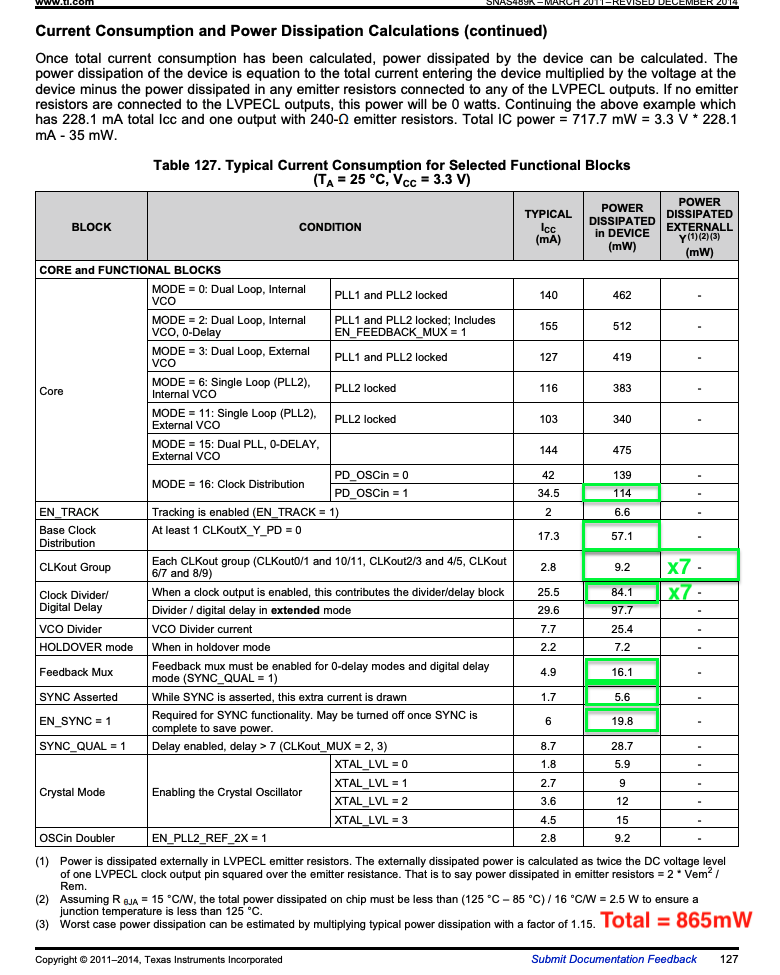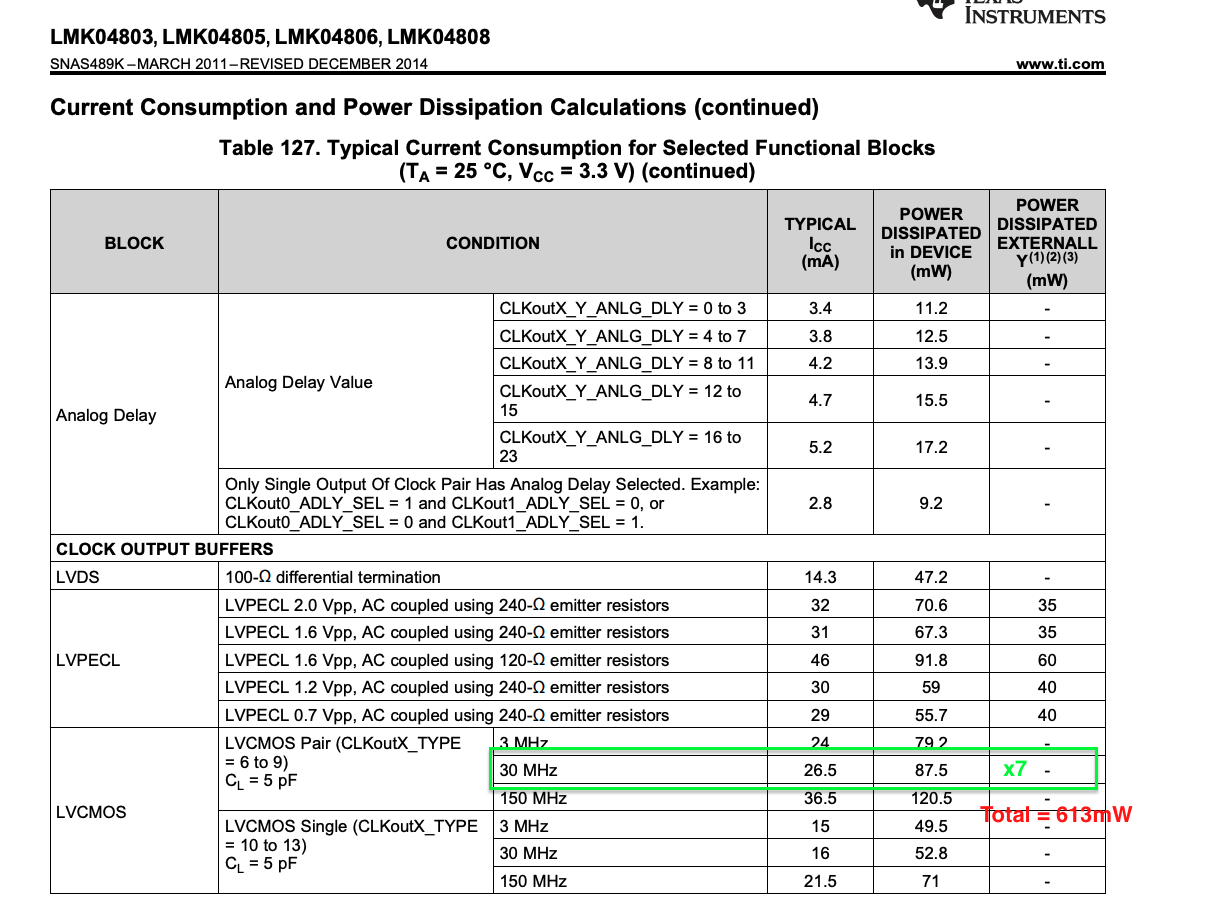Other Parts Discussed in Thread: CDCUN1208LP
Hi,
My design requires 14 outputs LVCMOS with minimal jitter.
All outputs are at 40MHz and must be synchronized. Input is also 40MHz but can be changed.
I calculated 865mW + 613mW (1478mW) of power dissipation. See pictures below.
Is there a way to reduce power consumption? Are the calculations correct?
Is there another device that could do what I need with total power around 500mW or less?
Thanks





